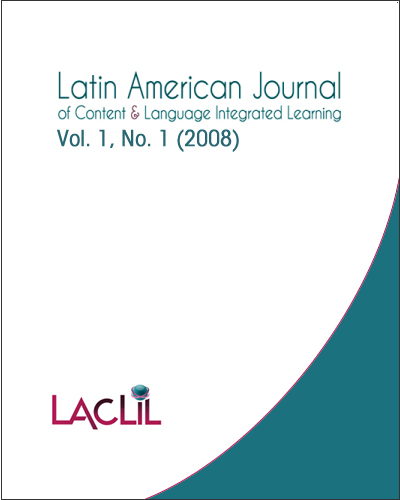Getting Your Hands on Learning: Manipulative Tools in Content ESL/EFL Instruction
DOI:
https://doi.org/10.5294/laclil.2008.1.1.7Abstract
Manipulatives are only for math classes and kindergartners, right? Wrong! Since Rita Dunn’s ground-breaking research on learning styles and Howard Gardner’s theory of multiple intelligences, educators of all subjects have tried to develop teaching techniques that allow all types of students to learn. Because of their highly visual and kinesthetic/tactile character, manipulatives are an especially powerful tool for ESL-content instruction. However, they are relatively unknown in the ESL field because many teachers believe that manipulatives can only be used with the very young or in math classes. In this article, I will explain how using manipulatives in class can turn learning into a fun and meaningful experience. I will provide 7 different teacher-made manipulatives that have been used in ESL language arts, science and social studies classes.
Downloads
Downloads
Published
How to Cite
Issue
Section
License
This Journal and its articles are published under the Creative Commons CC BY 4.0 DEED Attribution 4.0 International license. You are free to: Share — copy and redistribute the material in any medium or format for any purpose, even commercially. Adapt — remix, transform, and build upon the material for any purpose, even commercially. The license cannot revoke these freedoms as long as you follow the terms of the license.








